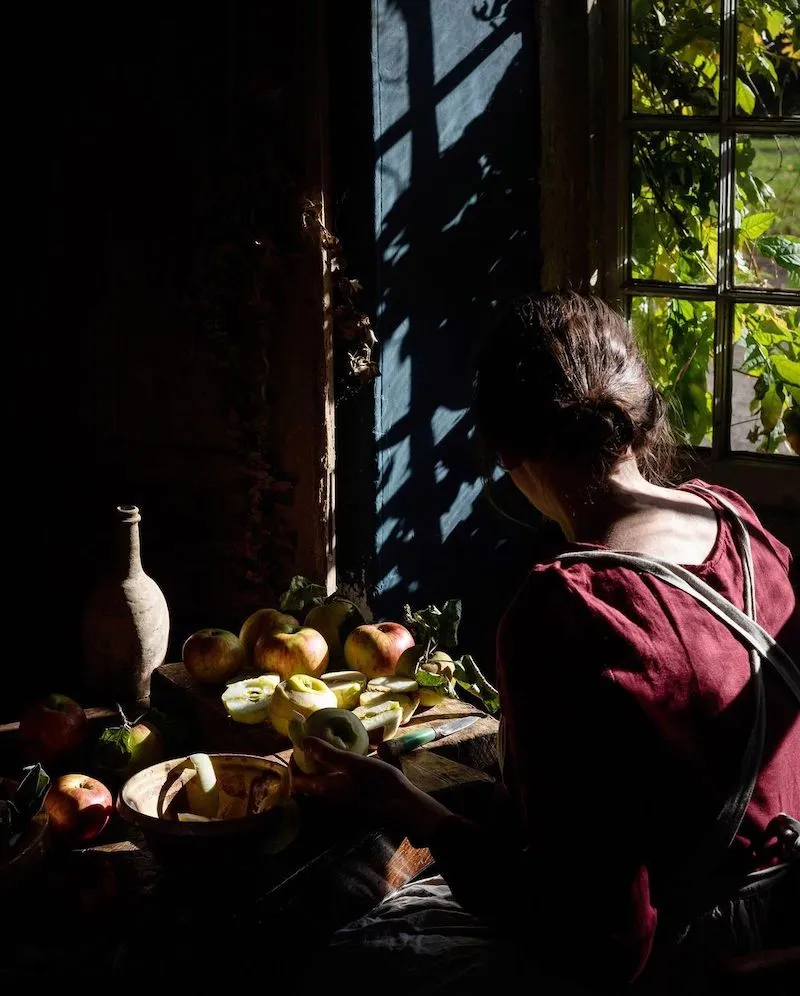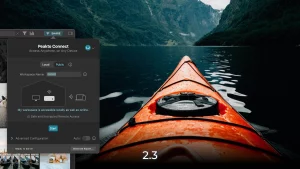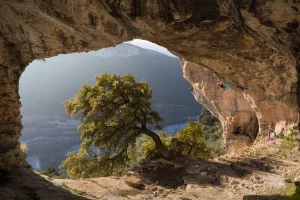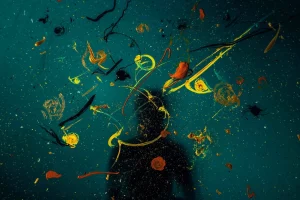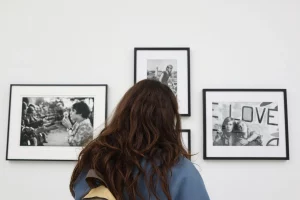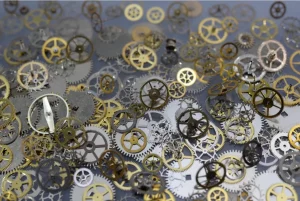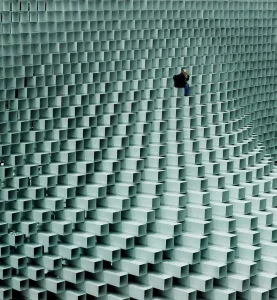A delight for the taste buds and a treat for the eyes. CYME invites you to discover a photographer who mixes taste, art history and nature. Beware! You may fall for her dishes as well as her photos. Aimee Twigger takes us on a gustatory journey through her recipes and her artistic elegance.
Her art, which borrows from the Flemish painters, has earned her the 2019 / 2020 Food Photographer of the Year Award. Gastronomy and Photography… it didn’t take much for us to want to introduce you to this incredible artist.
The reason why we develop Peakto, a photo organizing software for Mac, is because we love photography above all (and gastronomy in particular!). We are delighted to showcase inspiring photographers who share our values.
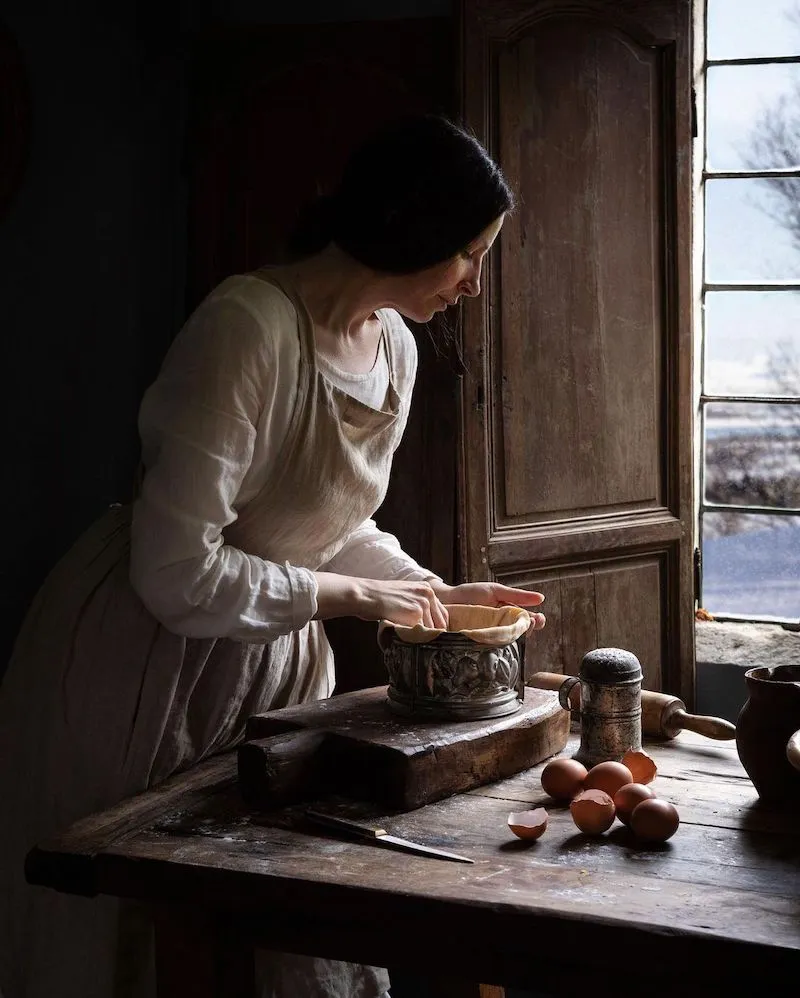
Could you describe your childhood–what were your passions and hobbies? How would you describe your career path ?
Hello, thank you so much for asking me.
I always look back so fondly of my childhood. I’m really lucky that I grew up with lots of outdoor space, close to the beach and the countryside. It meant my brothers and I spent most of our time outside.
My parents were separated, but both are really creative so our hobbies usually involved something artistic.
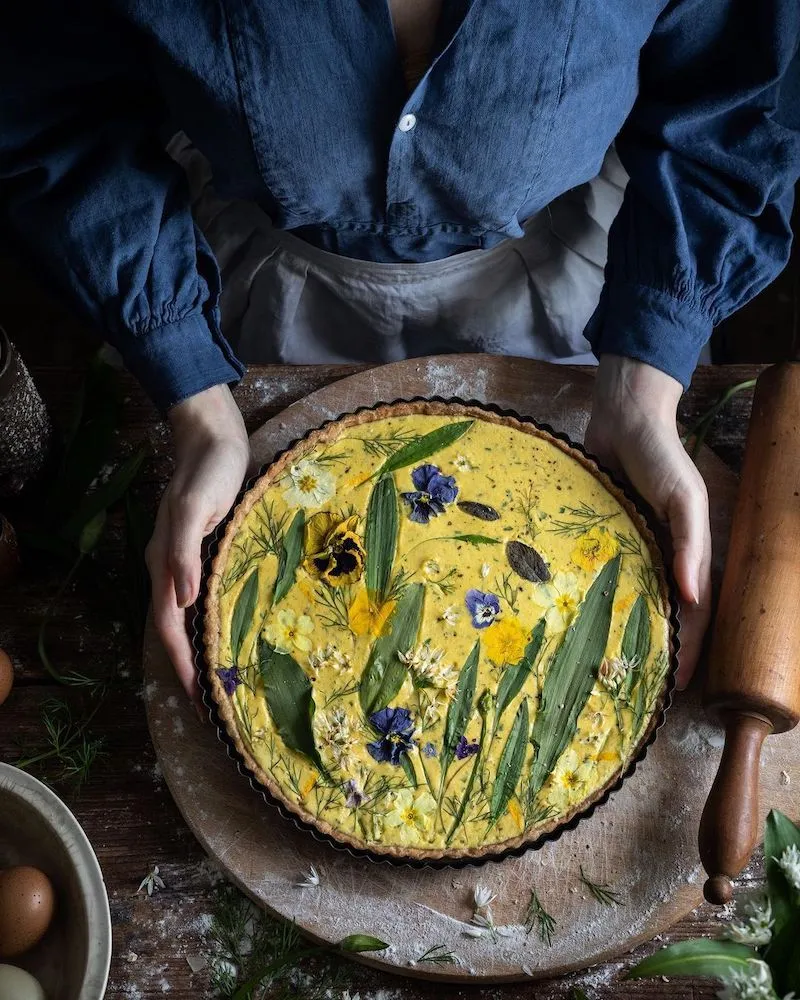
When we spent time with my dad we would do arts and crafts or play in this wood workshop, building things.
I think this time outside, and all the art activities we did influenced my hobbies as I grew up.
My nan lived in the flat beneath our house and she loved to bake. I would go in everyday following the smells from the kitchen.
I was always fascinated by the things she was making and loved to help in the kitchen.

When I left school I didn’t really know what it was I wanted to do.
I studied animal science at college, i love animals so I thought I would like to work with them in some way. The complete opposite of the creative career I have now.
This started out as a hobby for me, I started a blog for fun as a way to share crafts and things I had made. I loved making things with clay or paper and sewing.
I discovered I really loved baking and started sharing recipes. I then taught myself how to take photos and it all took off from there. It took a lot of trial and error, and i had limited equipment but i think its helped improve my skills.
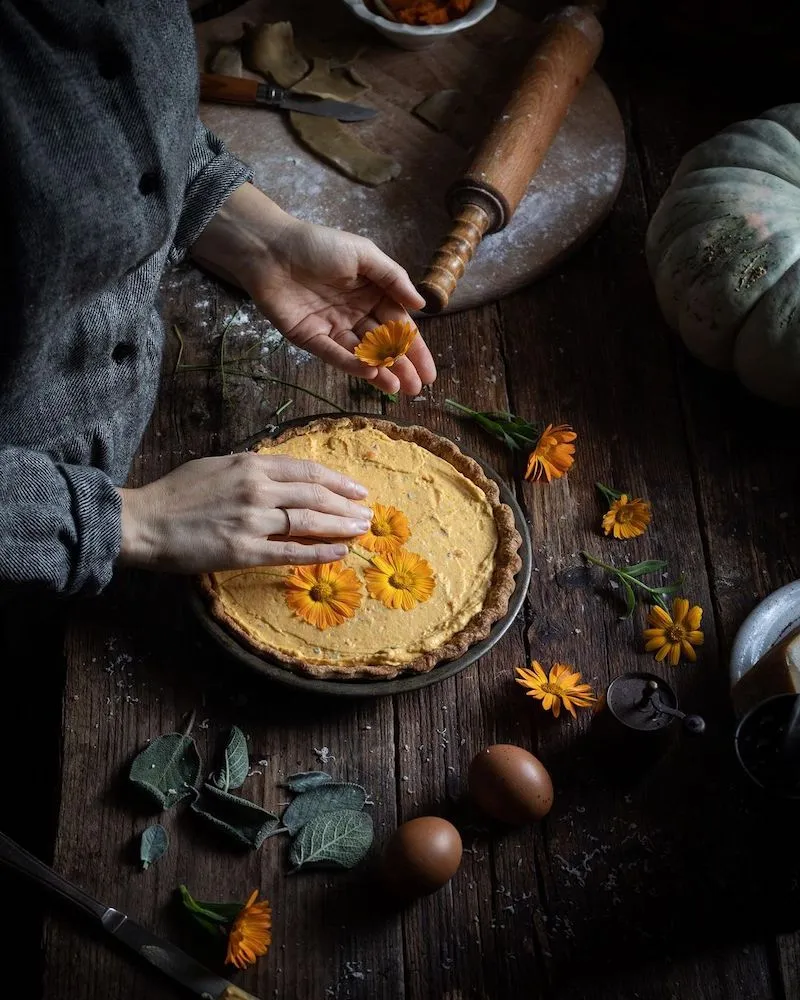
Looking at your publications, two major axes of creativity stand out: the artistic creativity in your recipes themselves, and the "staging" of the photography. Which of these passions did you pursue first ?
It’s always the food for me first, I really wanted to encourage people to get in the kitchen and discover the joy that baking can bring.
I love to cook seasonally and share recipes that make the most of all the seasonal produce.
I actually wanted to share easy, fuss-free seasonal recipes. I discovered that I loved photography as I am not a good writer.
I actually wanted to share easy, fuss-free seasonal recipes. I really wanted to be able to tell the stories that I had in my imagination and found I could do that with photos. Photography is a way for me to tell visual stories.
“Sometimes my creativity takes over and I get a bit carried away and make food into edible art.”
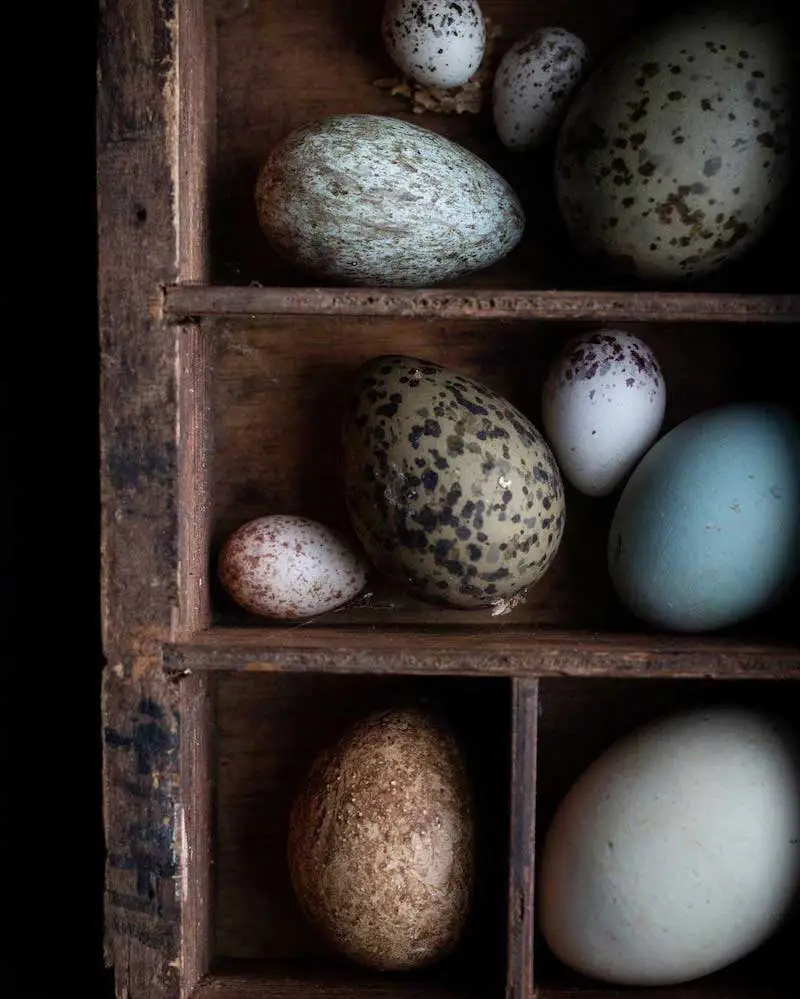

You seem to be very close to nature, to landscapes. Does the natural environment play an important role in your culinary and photographic creativity ?
Yes, I think it plays a massive role in the things I create. I think the recipes I create are seasonally driven and this then inspires the photos.
I take inspiration from nature, I love to look at the colours, the shapes and the light through the year.
Often when I go for a walk and see something it will spark a recipe idea. I love to forage and pick ingredients I find also. I enjoy using edible flowers and wild herbs.
Do you like Aimee's interview?

Your photos are more than the capture of a moment, of a gastronomic showpiece. From the photos taken in nature, to the preparation of a culinary masterpiece, to arrive at the image of the recipe realized, you invite us to share a unique journey. How do you imagine your "stories"? What are the values you want to share ?
Definitely, that is how i look at photography. I see it as my way of telling a story. I want the viewer to imagine that they are there with me, or imagine their own story when they see my photos.
I hope it is a way for them to escape for a moment.
I find that when I am finding things hard, cooking or photography helps, and I hope my images share the calm that it brings me.
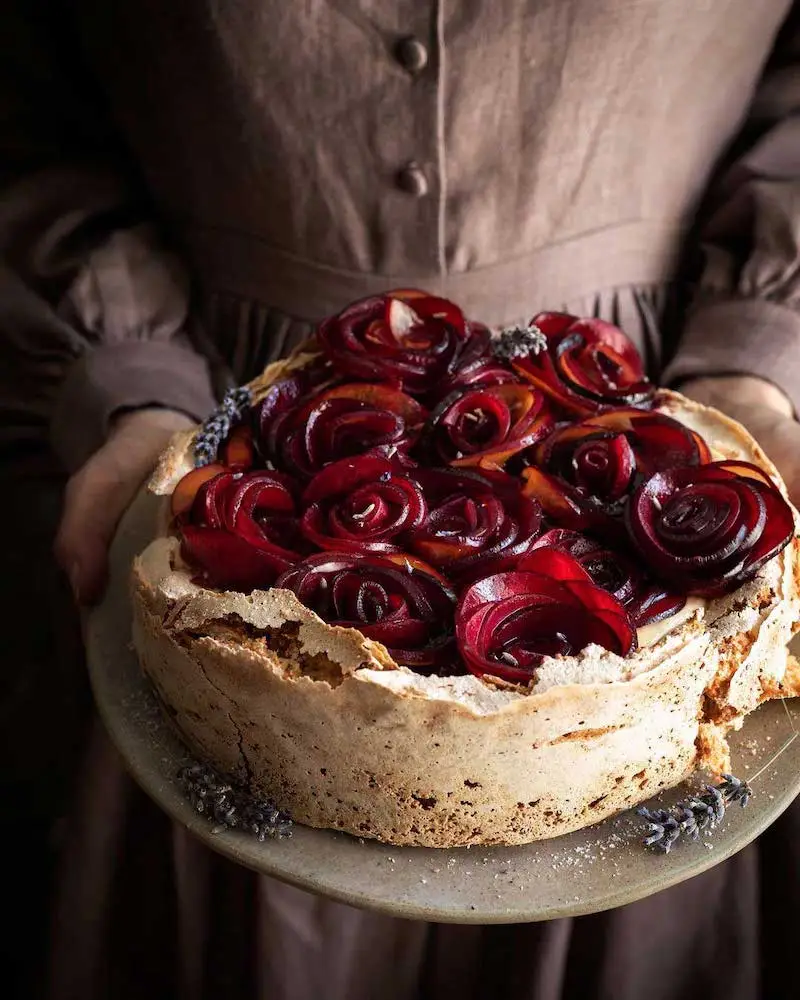
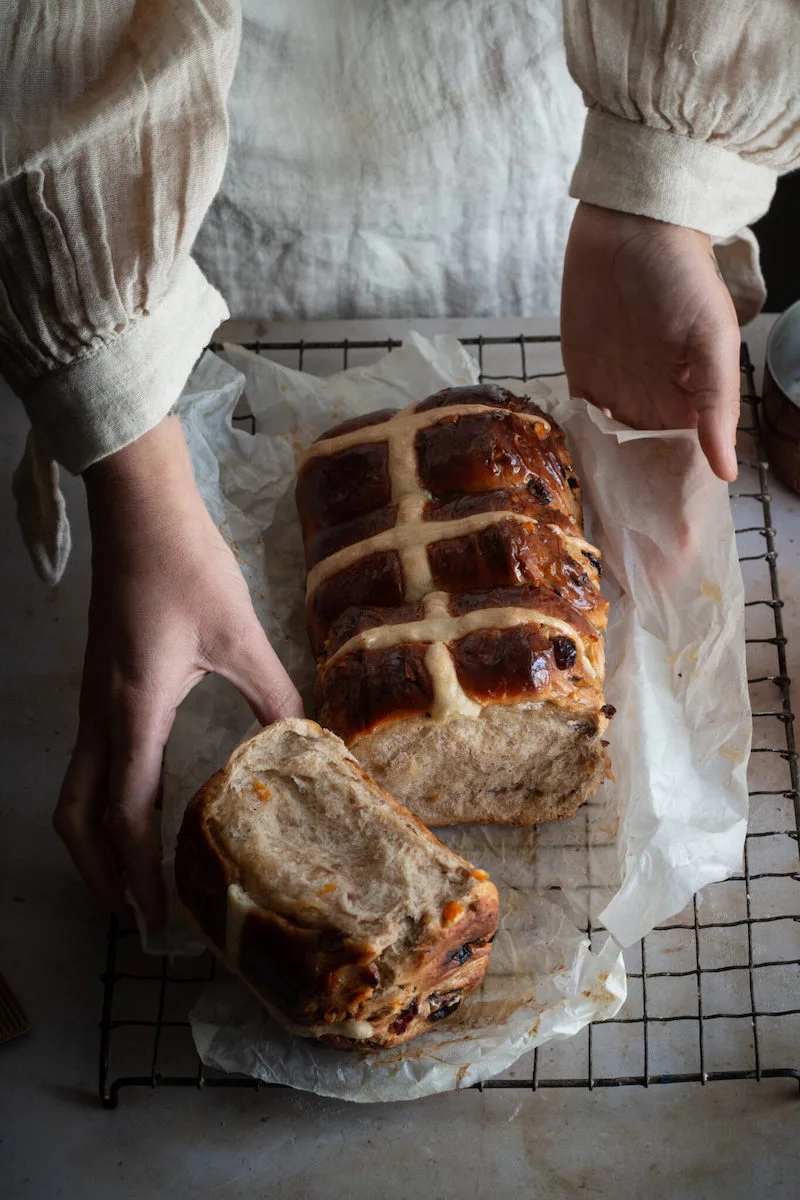
While photos can only appeal to the sight, you manage by your creations to awaken all our senses. Looking at them, we seem to feel, taste, touch... Do you have a precise method in setting up and designing your photos, to solicit the senses in an emotional way ?
Yes, I think that in order to tell the story it is important to consider how you can make the viewer sense those things.
I will think about the recipe I am creating, and what about it I want to show, then think how I can share it in a way that sparks all the senses. For example for a soft fluffy dough recipe. I try to keep the styling in my photos as realistic as possible. I love to share the mess. Sometimes just the joy I feel when baking is the story I want to share.
“If I make a loaf of fluffy milk bread that is pillowy soft when you cut into it. I would think about how I could show that softness in the photo.”
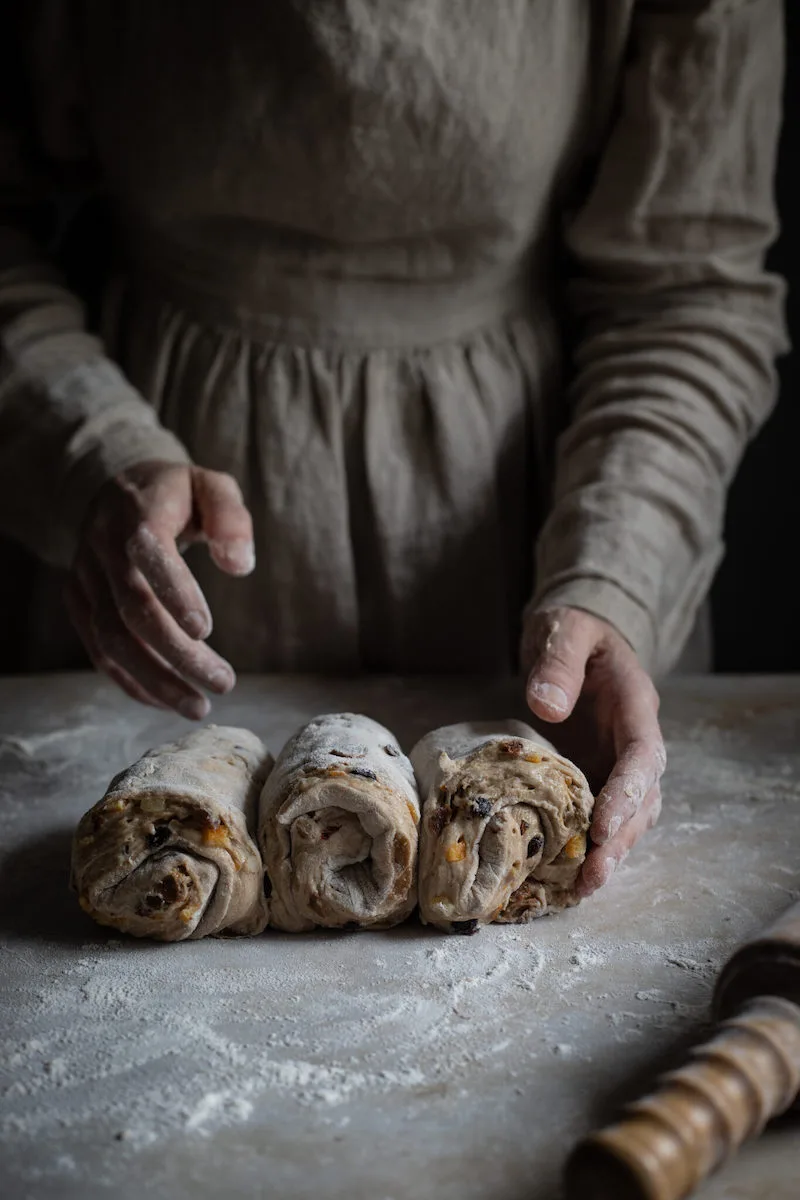
Is there a connection between the photographic techniques you use and the recipe itself--perhaps the ingredients, the origin, the historical significance... Something about the recipe that influences your vision of the final image ? Do your photographic techniques vary from recipe to recipe ?
Johannes Vermeer inspire me through his paintings of people in the kitchen, or people doing mundane tasks around the home. There’re others artists that use a chiaroscuro style, and my love for vintage homewares probably inspire my style the most.
I tend to stick to the same style for most of my photos. Sometimes I will take less arty shots. It’s depends on my mood and how inspired I feel.
Usually, I take photos in the same room each time, so the light is often what influences the images I take. When I am photographing somewhere else that will influence the photos, so maybe it is to do with the space i am in. I think i get a lot of the inspiration for my photos from artworks.

You have developed a very personal technique to photograph your recipes... Could this technique be used to photograph other subjects? Do you have any plans in this direction?
Yes definitely, I think it can be used for any subject you are photographing when you want to tell a story, or get a message across.
I have some jobs that don’t involve food, like gardens and landscaping and interiors.
If we look deeply into your universe, we can recognize references to the medieval period or to Renaissance painting. How are your ideas for photographic projects born ? What are your sources of inspiration ?
Of course, I’m so glad you can see that. I have such a love for paintings.
I find, I am able to escape into the paintings when I look at them. I take a lot of inspiration from them. I love to study the light and how it is used.
Sometimes I will try to recreate a painting I have seen.
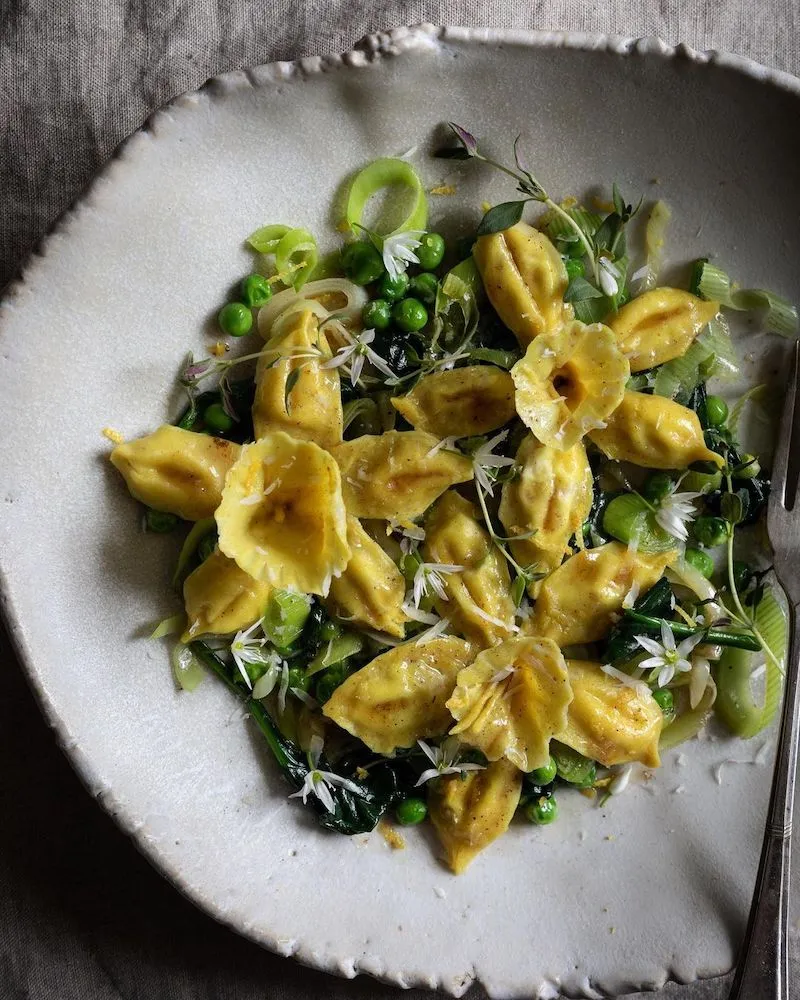
Recipe : Beetroot rose tart
Beetroot roses, mixed with squash and sweet potato for a tart with a ricotta, parmesan and caramelised shallots. Its such a pretty tart to brighten up a meal, the veg slices curl up and look like dried roses in the oven.
Discover here the most beautiful Beetroot roses tart recipe!
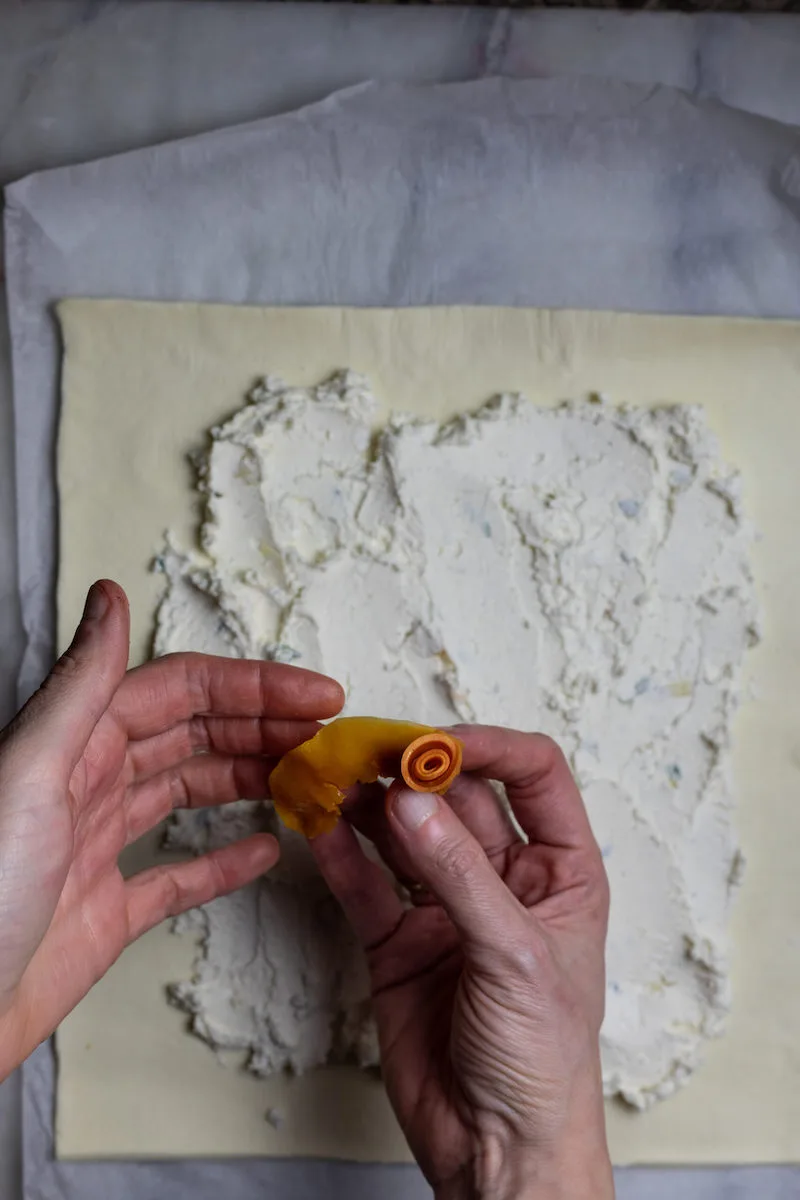

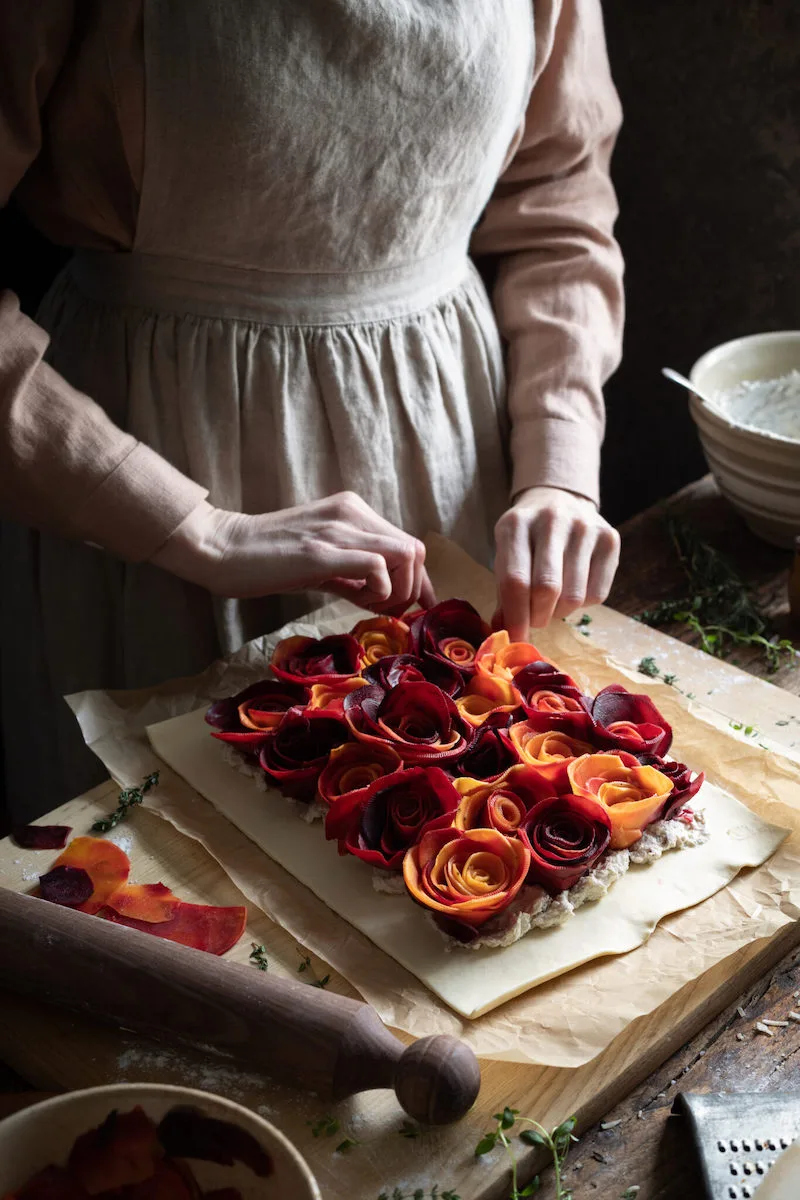
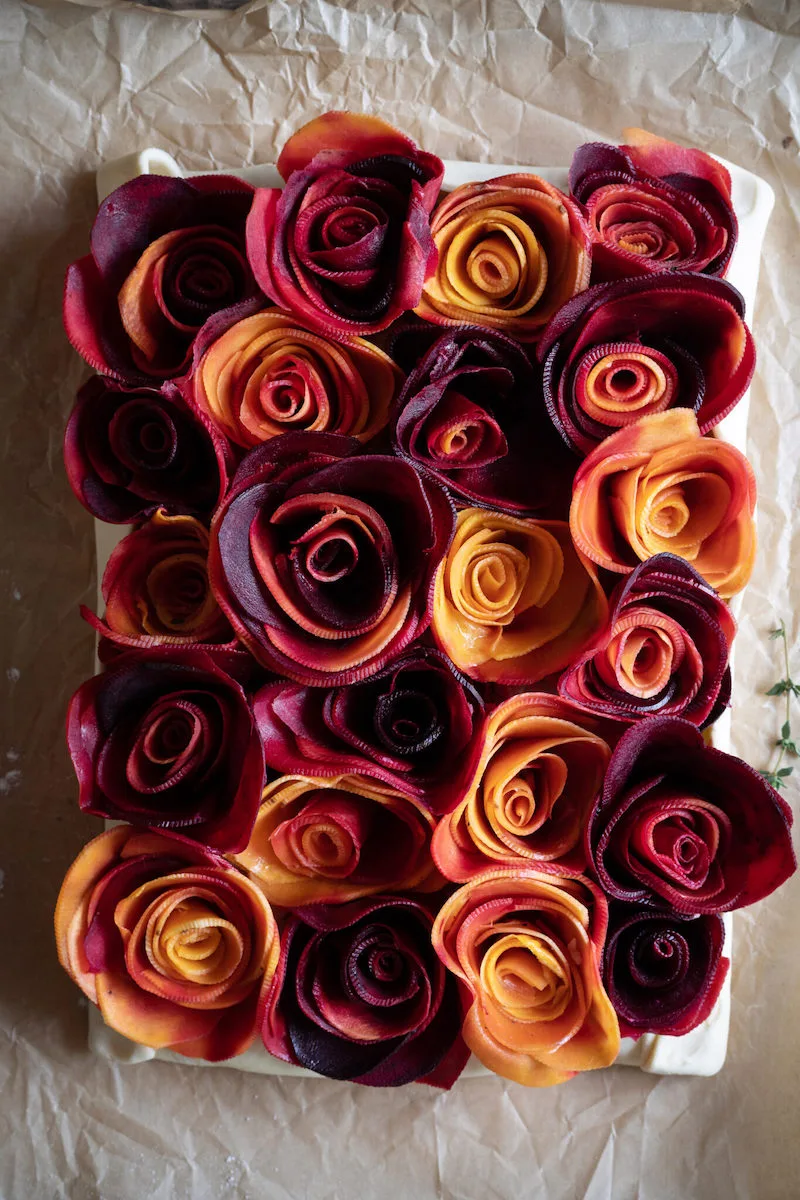
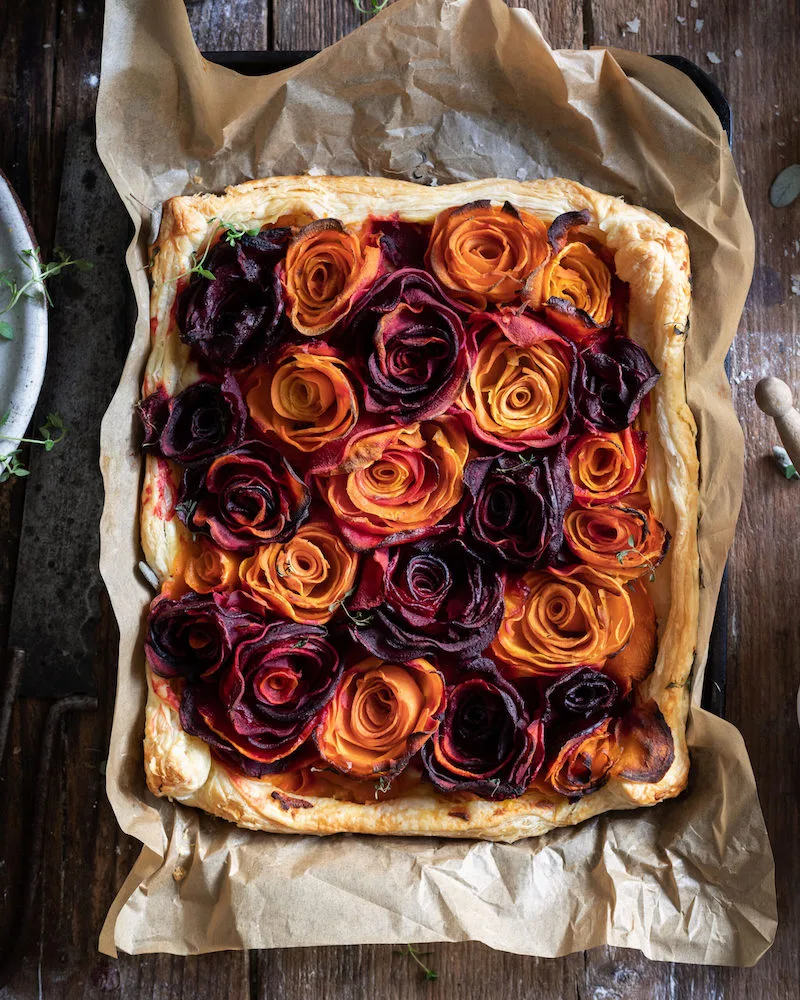
Is your artistic approach more solitary or do you like to work in collaboration?
I tend to create alone most of the time. It’s great for a while, but I find my inspiration runs out. I find I get stuck redoing the same things and my photos get a bit stale. I also find I get bored with my own surroundings and find it restrictive shooting in the same room all the time.
I love it when I can collaborate with others and go and visit them and have a change or scenery. This always sparks my inspiration, and often it is the work I am most proud of.
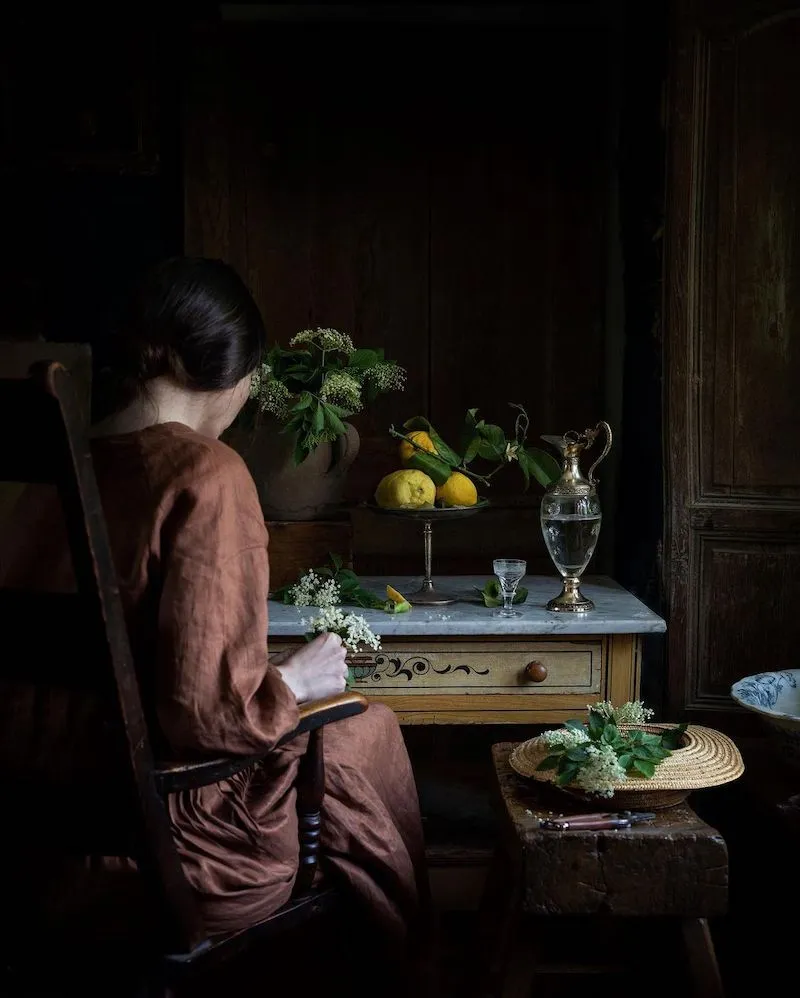
What is the best part of your day as a culinary artist?
I think the best thing is being able to bring the things you have in your imagination to life. I love it at the end of the day when I can look back and see what I created. I love being able to feed people too.
Can you name three inspirations that have most influenced you as an artist, such as a book, a chef or a photographer?
There is Vermeer / Rembrandt. Linda Lomelino, her photography work is so beautiful. Gill Meller, I love his cookbooks and his seasonal cooking. His cooking style is very different but I love his approach.

What equipment do you use (camera…lenses...) ? Can you describe a little bit about how you choose the setup for shooting and lighting ?
I have a canon 5d mk iv, I have had it for 3 years i think. Before that I had a canon 70d. I had solely used a cheap canon 50 1.8 lens for the last 5 years. It only cost me £60.
Last month I finally got the EF 24-70mm f2.8L II USM Lens
I had been missing out, it’s so much easier to use. I think shooting with a 50 for so long actually really helped me get better at framing and composition though.
I have a manfrotto tripod. I used to only shoot handheld, but now I always use my tripod. I only shoot with natural light, so my setup is next to a window. I find that light is the thing that inspires most of my images, so I love natural light. I shoot in a room that has just one small window.
Does this interview inspire you?
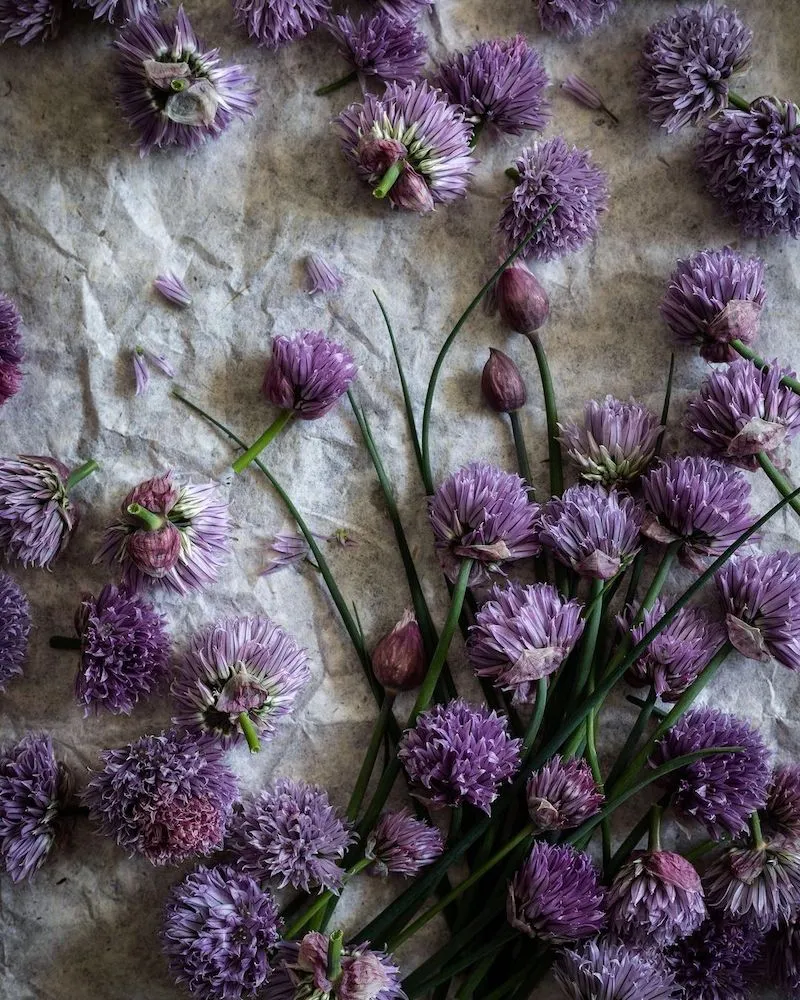
What kind of editing do you do on your pictures ? What are your favorite softwares for retouching and organizing your images ? Do you have a particular editing workflow ?
I use lightroom for the basic edits, then I take the photos into photoshop.
I don’t tend to do a huge amount of editing to the images, I get them as close to what I want in the camera. I do like to create a vignette and darken certain areas. I love the clarity brush in Lightroom. It’s great for empathizing textures.
I find the retouching tools in photoshop are more precise than lightroom, so I alway use photoshop for that. I have a tattoo that I don’t want in my photos. I don’t like it, so I always remove it if it’s visible.
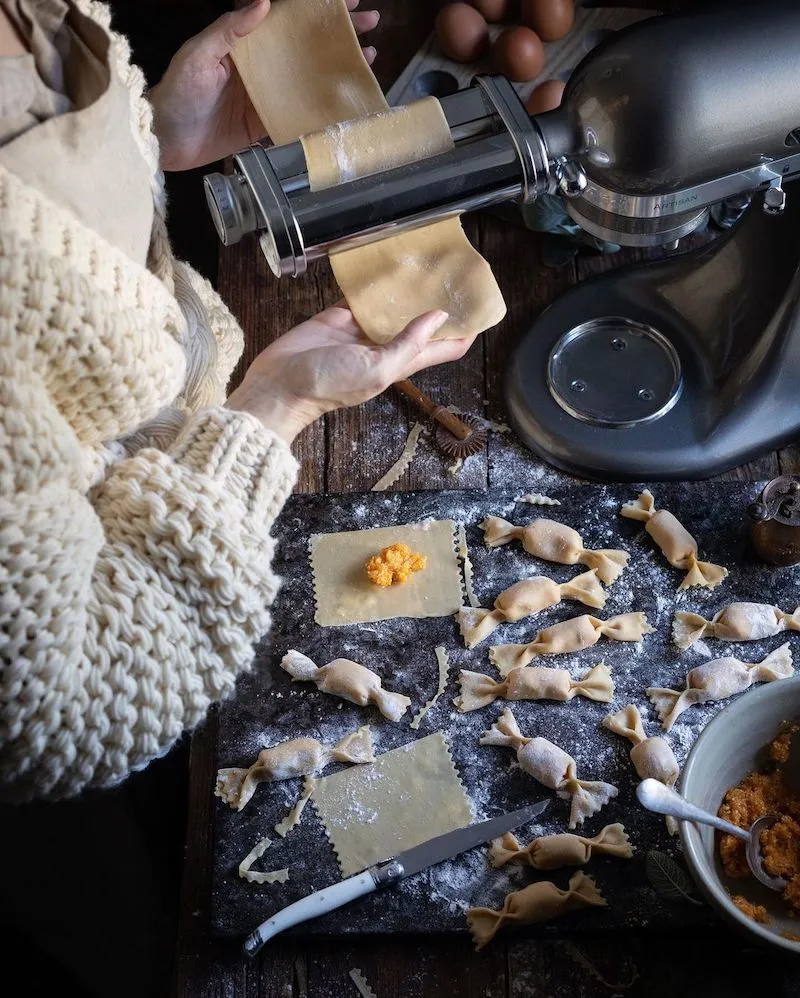
What advice would you give to a young photographer who wants to get into food photography ?
Study the light and how it hits the food. You should experiment with different lighting.
It might sound silly but carrying an apple or something around the house. seeing how the light hits it from different windows can help you find the best light. have a look at how it changes from side light and back light. see the difference from harsh direct light and soft diffused light.
Food doesn’t photograph well if it is lit from above. that can make it look flat.
Once you have found the best light, don’t be afraid to move around it with your camera and see which angle highlights it best.
Practice, as often as you can. Try out different styles of photography (light and bright/ dark and moody) and see which one you find resentates with you most.
“The light is the most important thing in a photo.”

Which of your creations are you proudest of ? Could you share it with us in a photo ?
That’s a hard one, unfortunately I am the type of person that dislikes the images I have taken after a week ha ha. But I do love all the photos I take when I go to stay with my friend.
I really love this photo, i’m not sure why, it only took a few minutes to set up and take. It was at my friend Ros’s house.
i used the canon connect app to link my camera and phone to take a photo of myself. i always love the photos i take when i am there. she lives in a beautiful old house, so it allows me to be really creative.
